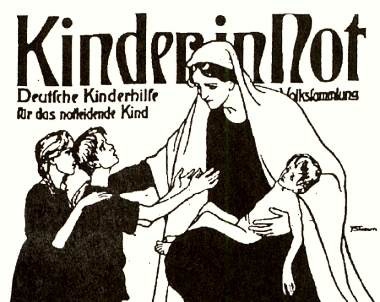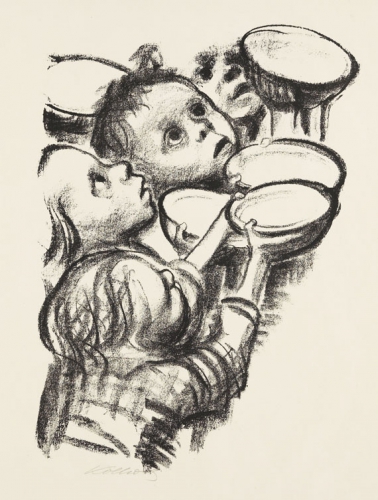mardi, 03 mars 2015
Making the World Safe for Atrocity
Making the World Safe for Atrocity
 Commentators marked World War I’s centenary last year with cloudy references to its “dreadful lessons” and “emotional legacies.” And the victor countries’ leaders stressed the “profound sacrifice” (Barack Obama) the conflict’s “generation…made for us” (David Cameron). But if these recollections are any guide, one of the war’s dark chapters has been largely forgotten.
Commentators marked World War I’s centenary last year with cloudy references to its “dreadful lessons” and “emotional legacies.” And the victor countries’ leaders stressed the “profound sacrifice” (Barack Obama) the conflict’s “generation…made for us” (David Cameron). But if these recollections are any guide, one of the war’s dark chapters has been largely forgotten.
George Bernard Shaw discussed this episode nearly a century ago, in July 1919. “We are at present at a climax of national exultation over the most magnificent military triumph in our long record of victory,” he observed. “But the splendour of the end,” he added, “had better not blind us to the grimness of the means, which were the work of our hands.” Shaw meant that England had “starved the children of Germany, and of many other lands as well.”
The starvation campaign’s centenary is next month. It was on March 1, 1915, that “Britain and France announced that they intended to expand the objectives of the naval blockade of the Central Powers to include the interdiction of food,” Alexander Downes writes in Targeting Civilians in War. This declaration followed Germany’s, on February 4, signaling the start of submarine warfare, but merely exploited the Kaiser’s pronouncement as “an excellent pretext to interdict German food imports in a way that avoided offending neutral opinion,” Downes explains.
Depicting the blockade as a response to German aggression deflected attention from British criminality. Ralph Raico writes that, “according to everyone’s interpretation of international law except Britain’s,” the expanded blockade “was illegal,” and Downes argues that “the reigning norms and laws of naval warfare—codified in the Declaration of London, negotiated by the leading naval powers in 1908-9”—forbade it. But the law proved as great an obstacle to British officials as moral concerns. Winston Churchill clarified in 1914, while First Lord of the Admiralty, that the goal with Germany was “to starve the whole population—men, women, and children, young and old, wounded and sound—into submission.” Top defense official Maurice Hankey agreed, writing in 1915 that there was no “hope to starve Germany out this year,” though “next year” looked better.
Hankey’s forecast was accurate. The war was devastating, writes Matthew Stibbe, since “Germany depended on foreign imports for around one-third of its food needs” before 1914. “Without access to imported fertilizers,” Downes notes, “the yields of German harvests declined over the course of the conflict,” falling from “4.4 million tons of wheat in 1913” to “2.5 million tons in 1918.” Furthermore, “German consumption of meat products plummeted from 1,050 grams per week in 1913 to 135 in 1918.” Exacerbating the problem, according to Hans-Jürgen Teuteberg, was that the German “state did virtually nothing to reduce the dependence on food imports.”
German suffering sharpened during the 1916-17 winter, Stibbe explains, when “ordinary civilian rations had fallen below 1,000 calories a day”—“barely sufficient for a child of two or three years old,” Britain’s official historian of the blockade elaborated. C. Paul Vincent relates the story of one Dr. Neumann, who in 1916 “performed an experiment in which he limited himself to the legally allowed food ration for an average person. After six months on this regimen, the professor had lost a third of his weight and his capacity for work had been destroyed.”
But hunger and illness brought the most ruin to women and children. Downes writes that “by 1918 the female death rate in Germany had increased 50 percent over the rate in 1913, and was also 50 percent higher than the corresponding rate in England.” “The death rate of children between the ages of one and five” jumped 50% during the war, with a 55% rise for children aged five to fifteen, according to Vincent. “The infanticide in Bethlehem was child’s play compared with the starvation of German children as a result of the three years of economic blockade,” a Berlin priest and anti-war activist remarked, surveying the wasteland. One wonders how he would have ranked President Clinton’s Iraq sanctions, estimated to have killed 500,000 children by 1995—“worth it,” in Madeleine Albright’s view.
 For German survivors, withered by hunger, life reduced to a series of grim alternatives. Lina Richter told of a 16-year-old who “attempted to destroy her life by suffocation with gas, owing to despair over the home conditions,” and was then hospitalized. Evelyn, Princess Blücher conversed with a woman for whom living “on the minimum of food still possible under the circumstances was so dreadful, that she thought it would be the most sensible thing to go with her child and try to get shot in one of the numerous street-fights;” a second woman considered “turning on the gas on herself and her two small children, and putting an end to the horrors of living.”
For German survivors, withered by hunger, life reduced to a series of grim alternatives. Lina Richter told of a 16-year-old who “attempted to destroy her life by suffocation with gas, owing to despair over the home conditions,” and was then hospitalized. Evelyn, Princess Blücher conversed with a woman for whom living “on the minimum of food still possible under the circumstances was so dreadful, that she thought it would be the most sensible thing to go with her child and try to get shot in one of the numerous street-fights;” a second woman considered “turning on the gas on herself and her two small children, and putting an end to the horrors of living.”
The blockade continued after the armistice, lifting only in July 1919, by which point the excess civilian death toll was somewhere between 475,800, in historian Jay Winter’s estimate, and the official German figure of 763,000. And the U.S. had backed the starvation campaign upon entering the war. “Not given to half-measures, Wilson ensured that every loophole left open by the Allies for the potential reprovisioning of Germany was closed,” Vincent argues. Critiquing Wilson-style diplomacy, George Kennan cited its “legalistic-moralistic approach” as a chief weakness. His assertion, weighed next to Washington’s support for illegal and murderous British policy, describes the exact opposite of Wilson’s method—worth bearing in mind, given Kennan’s reputation as a “first-class strategic thinker” (John J. Mearsheimer).
Wilson’s standing as an incurable dreamer also rests on dubious assumptions. It seems obvious that his actions, publicly justified by the looming “German menace,” were the greatest wartime threat to U.S. citizens. He oversaw “one of the worst suppressions of civil liberties in the history of the United States” (Richard Striner) while taking the country into “a holy war to redeem the Old World” (Lloyd Ambrosius). “Because there had been no direct attack on the United States,” Geoffrey R. Stone adds, “the Wilson administration needed to create an ‘outraged public’ to arouse Americans to enlist,” and to this end “established the Committee on Public Information (CPI) under the direction of George Creel, a progressive journalist and public relations expert. Creel’s goal was to generate enthusiasm for the war”—to convince young men to enter a slaughterhouse, in other words.
Wade Davis details the front’s butchery with bleak poeticism, describing victims “caught on the barbed wire, drowned in mud, choked by the oily slime of gas, reduced to a spray of red mist,” their “quartered limbs hanging from shattered branches of burnt trees, bodies swollen and blackened with flies, skulls gnawed by rats, corpses stuck in the sides of trenches….” Both there and in Germany, Wilson’s liberal idealist path dead-ended at a graveyard—one of the war’s “dreadful lessons” recent commentary ignores.
Nick Alexandrov lives in Washington, DC. He can be reached at: nicholas.alexandrov@gmail.co
00:06 Publié dans Histoire | Lien permanent | Commentaires (0) | Tags : blocus, histoire, allemagne, première guerre mondiale, famine, crime de guerre |  |
|  del.icio.us |
del.icio.us |  |
|  Digg |
Digg | ![]() Facebook
Facebook



Les commentaires sont fermés.